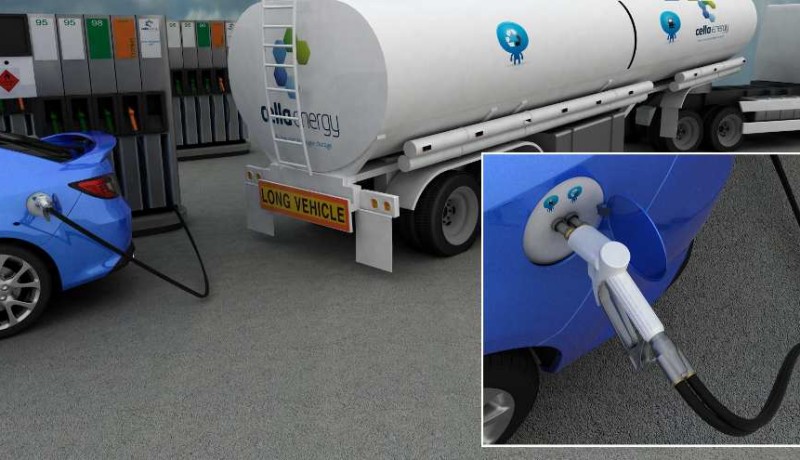Nanotechnology Brings Hydrogen Fueled Cars One Step Closer
August 24, 2011
on
on

The application of nanotechnology brings the use of hydrogen as an alternative to gasoline one step closer. Encapsulating the hydrogen in a coat of nanoparticles allows it to be stored safely and at low cost. Paving the way for zero carbon emission energy generation.
The British company Cella Energy Limited is applying a newly patented technology to store hydrogen at ambient temperatures and low pressure. In gas form hydrogen is so voluminous that the only way to store a relevant amount of it is in pressure vessels. In liquid form it must be stored at minus 423 F (minus 217 C). Both storing methods are expensive and call for complex civil engineering schemes which is one of the reasons why hydrogen has, till now, not been a viable alternative for gasoline.
Hydrogen can be chemically stored in a hydride. A hydride is a chemical compound that bonds easily with hydrogen. Cella Energy uses ammonia borane NH3BH3 as the hydride. It releases hydrogen at temperatures between 230 F (110 C) and 300 F (150 C).
However, ammonia borane isn’t optimal. In the process it releases other chemicals such as ammonia and barozine which can be toxic to the fuel cell the hydrogen is supposed to power. And the release of the hydrogen is slow.
The company applies nanotechnology to counter these sub-optimal properties of the hydrogen using a process called coaxial electrospinning. Simply put it means weaving a material at nano scale. A nano-porous polymer is produced in which the hydride is encapsulated. The polymer filters out the toxic chemicals, speeds up the release of hydrogen and lowers the temperature at which the desorption process starts to 176 F (80 C). It also shields the hydride from oxygen which makes it possible to expose it to air.
The material comes in the form of silk paper-like micro-fibers or micro-beads. The result is a hydrogen carrier that is safe to handle and can be stored at ambient temperatures and low pressure. This means hydrogen can be distributed through the existing transportation infrastructure. Bringing hydrogen fueled cars one step closer.
Source: Elektor.de
Photo and more info: CellaEnergy.com
The British company Cella Energy Limited is applying a newly patented technology to store hydrogen at ambient temperatures and low pressure. In gas form hydrogen is so voluminous that the only way to store a relevant amount of it is in pressure vessels. In liquid form it must be stored at minus 423 F (minus 217 C). Both storing methods are expensive and call for complex civil engineering schemes which is one of the reasons why hydrogen has, till now, not been a viable alternative for gasoline.
Hydrogen can be chemically stored in a hydride. A hydride is a chemical compound that bonds easily with hydrogen. Cella Energy uses ammonia borane NH3BH3 as the hydride. It releases hydrogen at temperatures between 230 F (110 C) and 300 F (150 C).
However, ammonia borane isn’t optimal. In the process it releases other chemicals such as ammonia and barozine which can be toxic to the fuel cell the hydrogen is supposed to power. And the release of the hydrogen is slow.
The company applies nanotechnology to counter these sub-optimal properties of the hydrogen using a process called coaxial electrospinning. Simply put it means weaving a material at nano scale. A nano-porous polymer is produced in which the hydride is encapsulated. The polymer filters out the toxic chemicals, speeds up the release of hydrogen and lowers the temperature at which the desorption process starts to 176 F (80 C). It also shields the hydride from oxygen which makes it possible to expose it to air.
The material comes in the form of silk paper-like micro-fibers or micro-beads. The result is a hydrogen carrier that is safe to handle and can be stored at ambient temperatures and low pressure. This means hydrogen can be distributed through the existing transportation infrastructure. Bringing hydrogen fueled cars one step closer.
Source: Elektor.de
Photo and more info: CellaEnergy.com
Read full article
Hide full article



Discussion (0 comments)